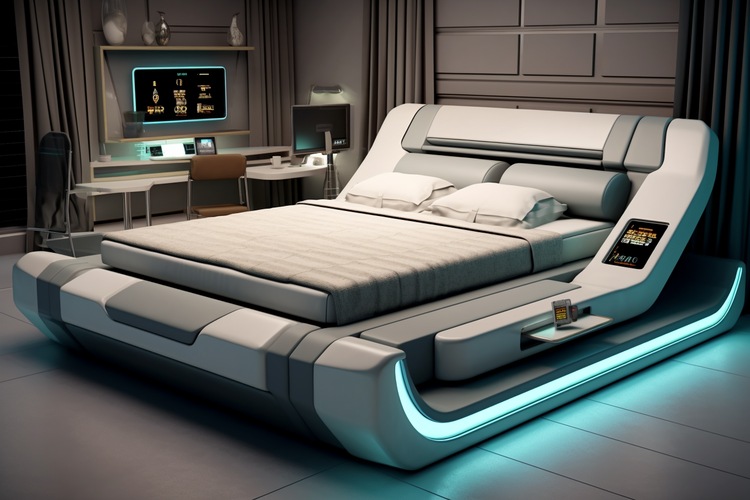Beds Through the Ages: A Journey of Comfort, Design, and Innovation
Beds are an integral part of human life, providing a place for rest, relaxation, and rejuvenation. An essential piece of furniture, beds have been an important part of human history and continue to evolve in design, function, and comfort. The concept of a bed dates back thousands of years. Early beds were simple platforms made of straw, leaves, or animal skins on the ground. Ancient Egyptians are credited with creating some of the first raised beds, using wood to construct elevated platforms to keep sleepers away from dust and pests. Wealthy Egyptians often adorned their beds with intricate carvings and gold accents.

Early Beginnings: From Ground to Platform
Ancient civilizations began their bedding journey with simple ground arrangements using natural materials. The earliest beds, dating back to 77,000 years ago, consisted of layers of plant material, providing basic isolation from the cold ground. Egyptian innovations around 3000 BCE marked a significant advancement with the introduction of raised wooden platforms, elevating sleepers above the ground to avoid insects and drafts.
Medieval Evolution: The Bed as a Status Symbol
During medieval times, beds became powerful symbols of wealth and status. The great beds of European nobility were elaborate affairs, featuring intricate wooden carvings, luxurious textiles, and canopies. These beds often served as meeting places for important visitors, demonstrating how beds transcended their primary function to become centers of social and political life.
The Industrial Revolution’s Impact on Bed Design
The 19th century brought unprecedented changes to bed manufacturing. The invention of steel coil springs in the 1850s revolutionized mattress design, offering superior support compared to traditional straw or feather filling. Mass production techniques made comfortable beds accessible to the growing middle class, democratizing good sleep.
Modern Innovations in Sleep Technology
Recent decades have witnessed extraordinary advances in bed technology. Memory foam, originally developed by NASA, introduced pressure-point relief. Adjustable bases, smart mattresses with sleep tracking capabilities, and temperature-regulating materials represent the cutting edge of sleep technology, creating truly personalized sleep experiences.
The Cultural Significance of Beds in Society
Beds hold unique cultural significance across different societies. In Japanese culture, traditional futons reflect minimalist design principles, while Western cultures typically prefer elevated beds. The concept of the marriage bed as a sacred space persists across many cultures, highlighting beds’ role beyond mere furniture.
Today’s Market: Options and Innovations
| Bed Type | Key Features | Average Price Range |
|---|---|---|
| Traditional Inner Spring | Classic bounce, good airflow | $500-1,500 |
| Memory Foam | Pressure relief, motion isolation | $800-2,000 |
| Hybrid | Combined support systems | $1,200-3,000 |
| Smart Bed | Sleep tracking, temperature control | $2,000-5,000+ |
Prices, rates, or cost estimates mentioned in this article are based on the latest available information but may change over time. Independent research is advised before making financial decisions.
The Future of Sleep: What’s Next?
Looking ahead, bed design continues to evolve with emerging technologies. Sustainable materials, improved ergonomics, and integration with smart home systems represent the next frontier in bed evolution. These innovations promise to further enhance our sleep experience while addressing environmental concerns and changing lifestyle needs.
The journey of beds from simple sleeping platforms to sophisticated sleep systems reflects humanity’s constant quest for better rest and comfort. As technology advances and our understanding of sleep science deepens, beds will continue to evolve, adapting to meet our changing needs while remaining central to our daily lives.




